Yesterday we went on a post-Christmas outing to the Watts Gallery and Artists Village in Compton, near Guildford. Quite a long drive from Hastings, but the M25 behaved itself for once, the rain held off, and it was a very interesting day with plenty to see. Hastings Battleaxe recommends!

We have come across Victorian artist George Frederick Watts before in this blog. He was the one who married the 16 year-old actress Ellen Terry, when he was 46. Back in 2014 I wrote about a visit to Smallhythe, Ellen Terry’s home near Tenterden, which is now a National Trust property, and included one of Watts’ paintings of the young Ellen, which helped to make her name. On learning more about Watts, it doesn’t appear that he had a pervy interest in young girls – he suffered from excesses of Victorian morality and high-mindedness, and wanted to save, improve and educate. Well, maybe he did like young women – he married his second wife Mary (of whom more later) when he was 69 and she was 36. Clearly, Mary was made of stronger stuff than Ellen Terry, who fled back home to her mother after only 10 months.
Watts had a modest upbringing, but earned a fortune as a very successful society portrait painter. He purchased land to set up his Surrey estate after his marriage to Mary in 1886. First came the house, Limnerslease, and then a complex of studios and the Watts Gallery, to exhibit his paintings, which by this time were very large and highly symbolic – and his sculpture, equally large. Also, the Watts Chapel for the neighbouring Compton Village Cemetery. The gallery fell into severe disrepair over the years but was restored and reopned in 2011.
The place still has a slightly eccentric, artists colony feeling about it – lots of enthusiastic volunteers, slightly distracted staff, poor signage, a lot of walking etc etc…
We started our visit with coffee and cake in the very good tea-room (and returned there for lunch later – I had the ‘Watts Special Welsh Rarebit’. Now, why should Watts have his own Welsh Rarebit. No idea. Excellent fiery ginger beer as well).
Next, we walked down the road to the chapel. Now, that is something else. Designed by Mary, who was clearly a redoubtable woman and a renowned painter and ceramicist in her own right, it was a community project to enhance the education of the people of Compton – all the locals worked on it. When we visited it was covered with scaffolding, which meant that the windows were obscured, but we could still go inside. This picture of the exterior is from the internet. The inside is a riot of Art Nouveau ironwork, gesso relief and paintings. Fabulous.
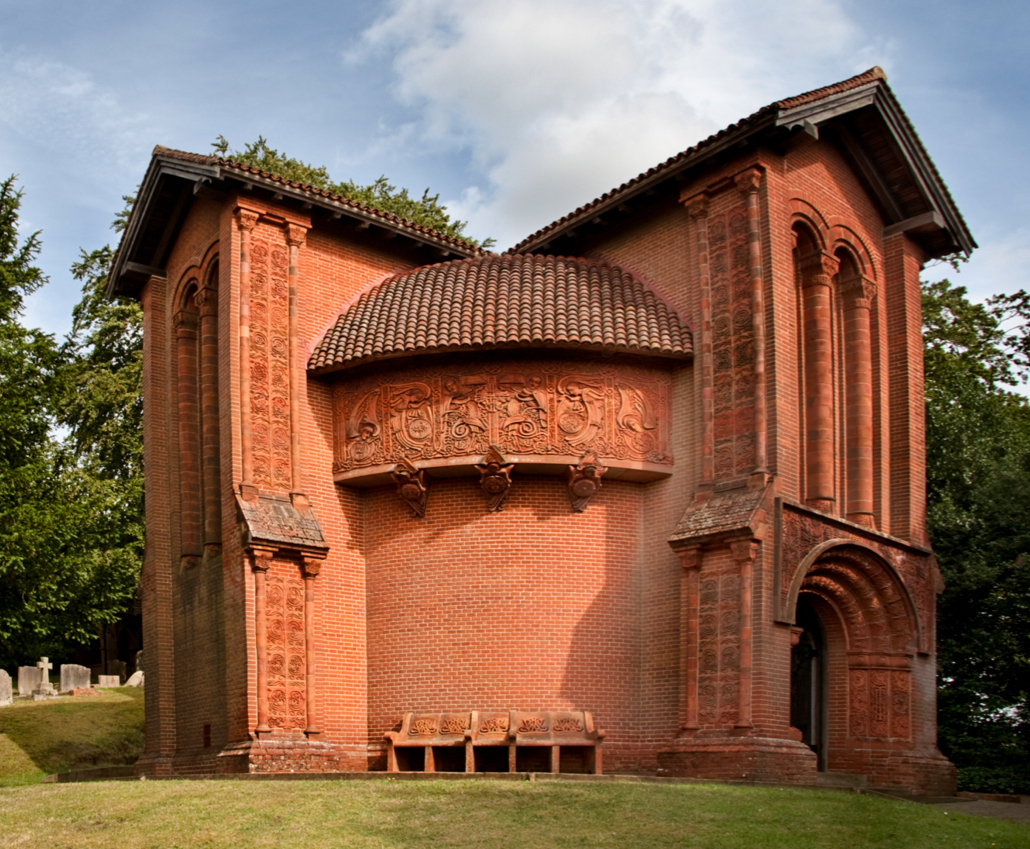
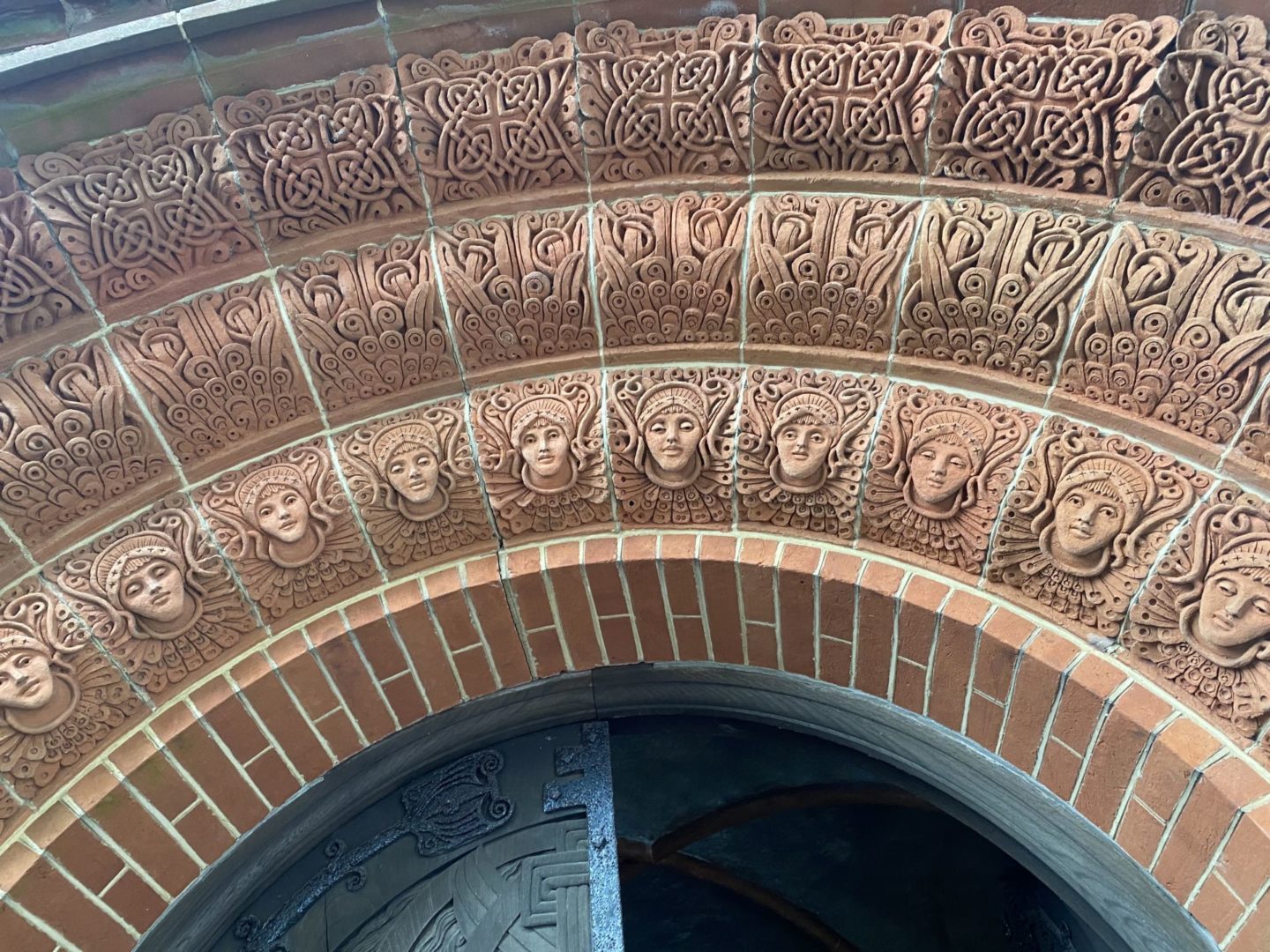
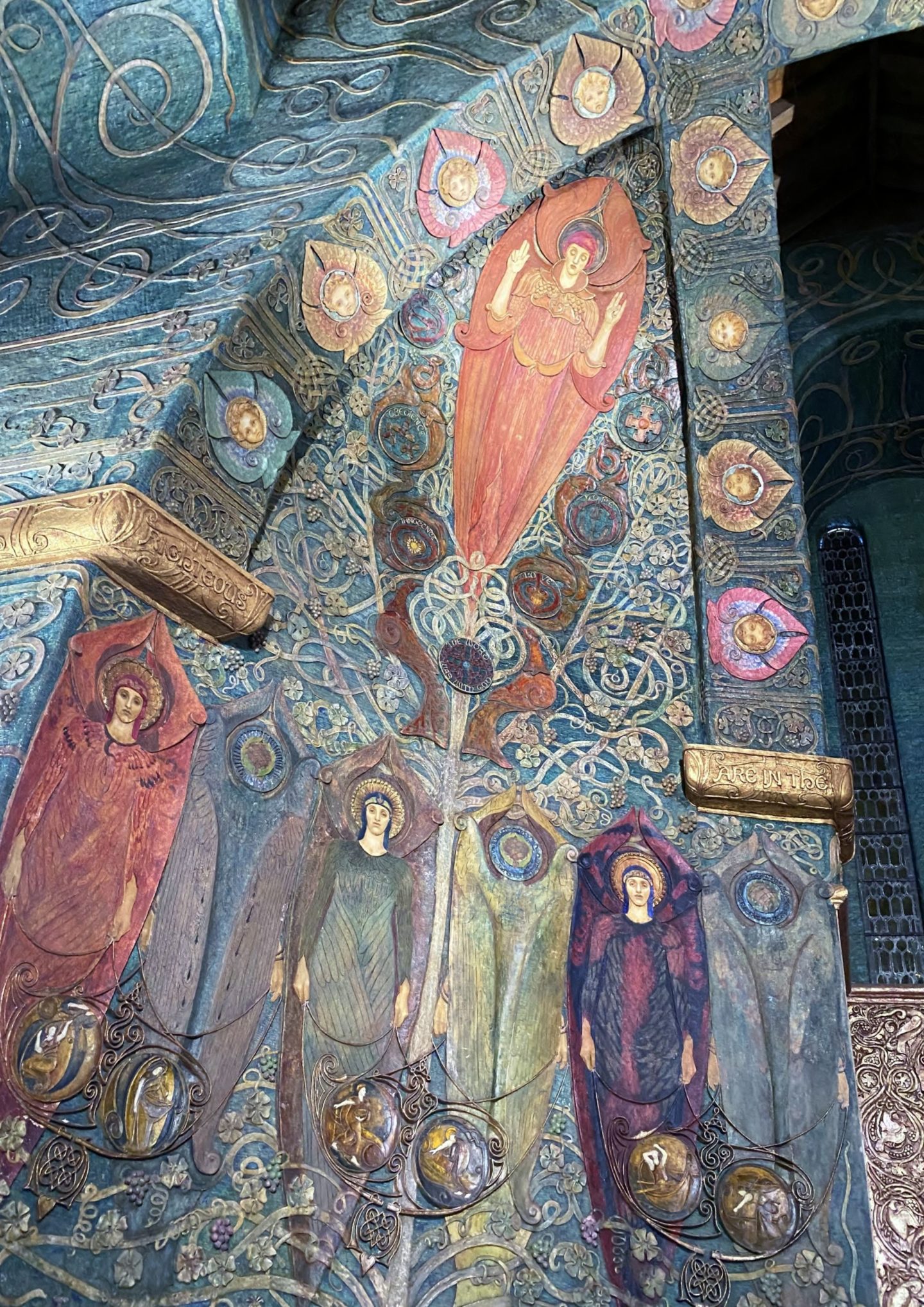
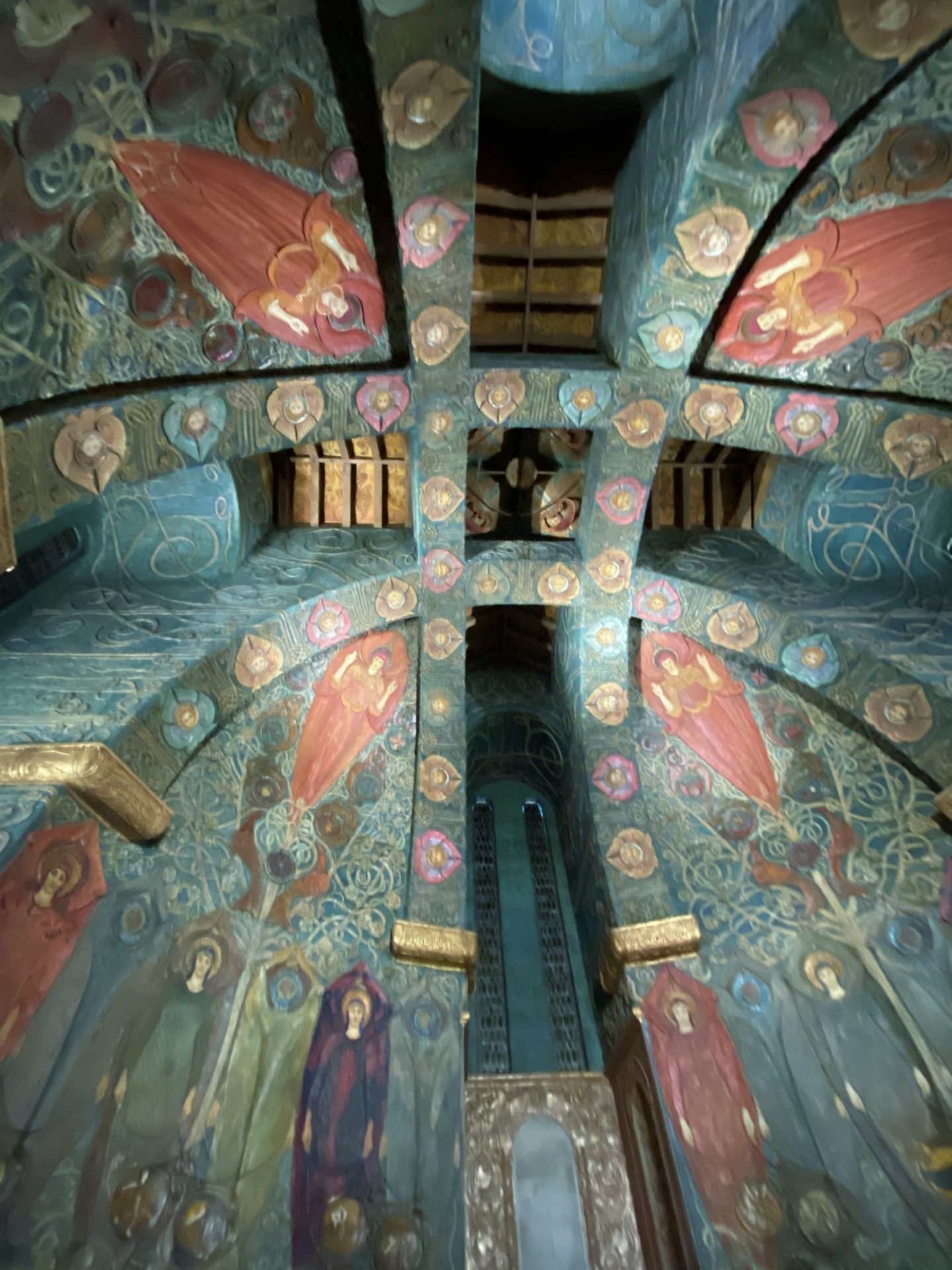
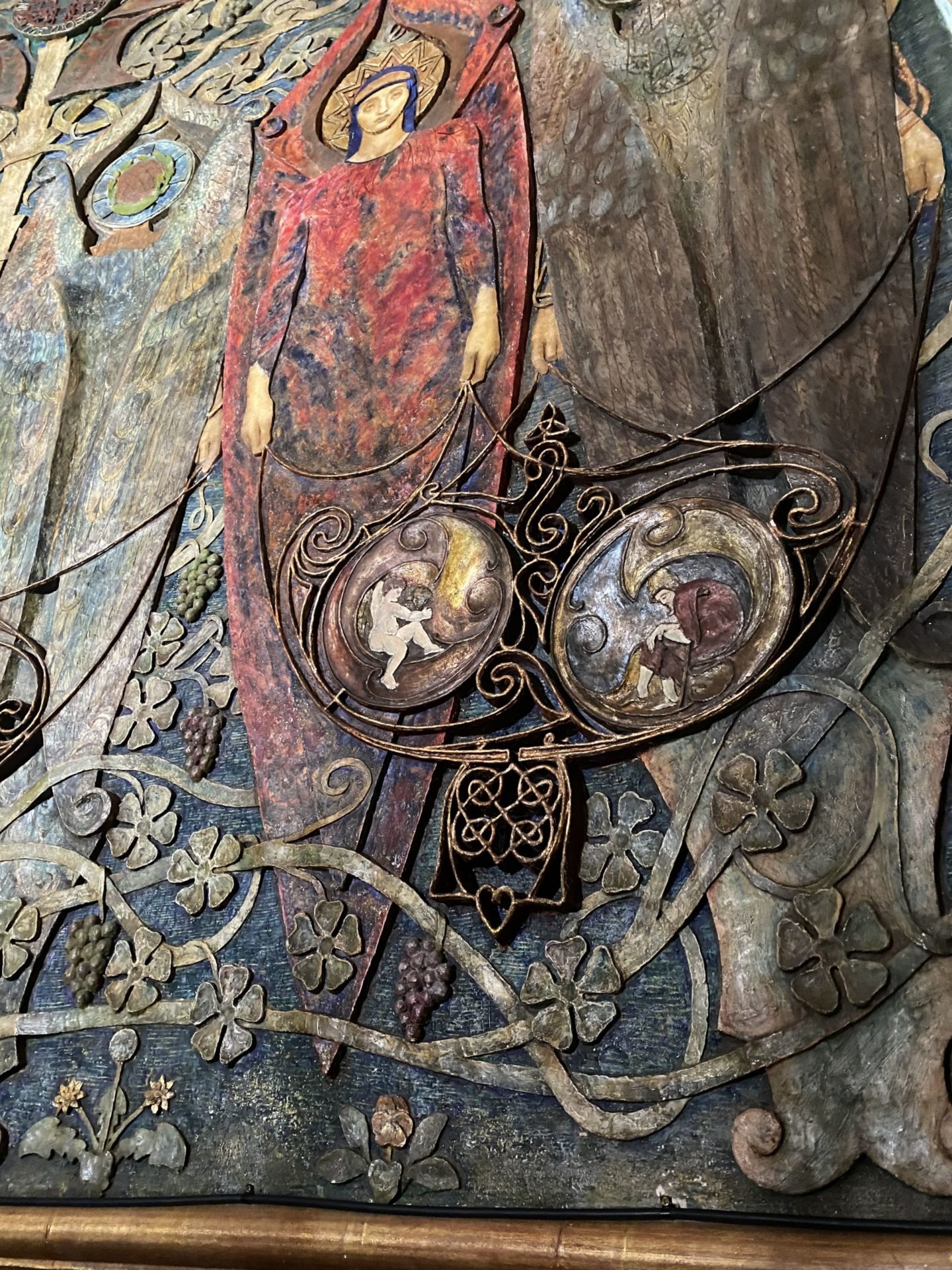
The cemetery also contains an elaborate cloister, containing Watts’ memorial, and many fine Art Nouveau style graves, many now covered with moss and tilted by huge trees. It was a fitting, misty romanitic day to visit and wander around…. even Battleaxe has gone a bit blurred and symbolic….


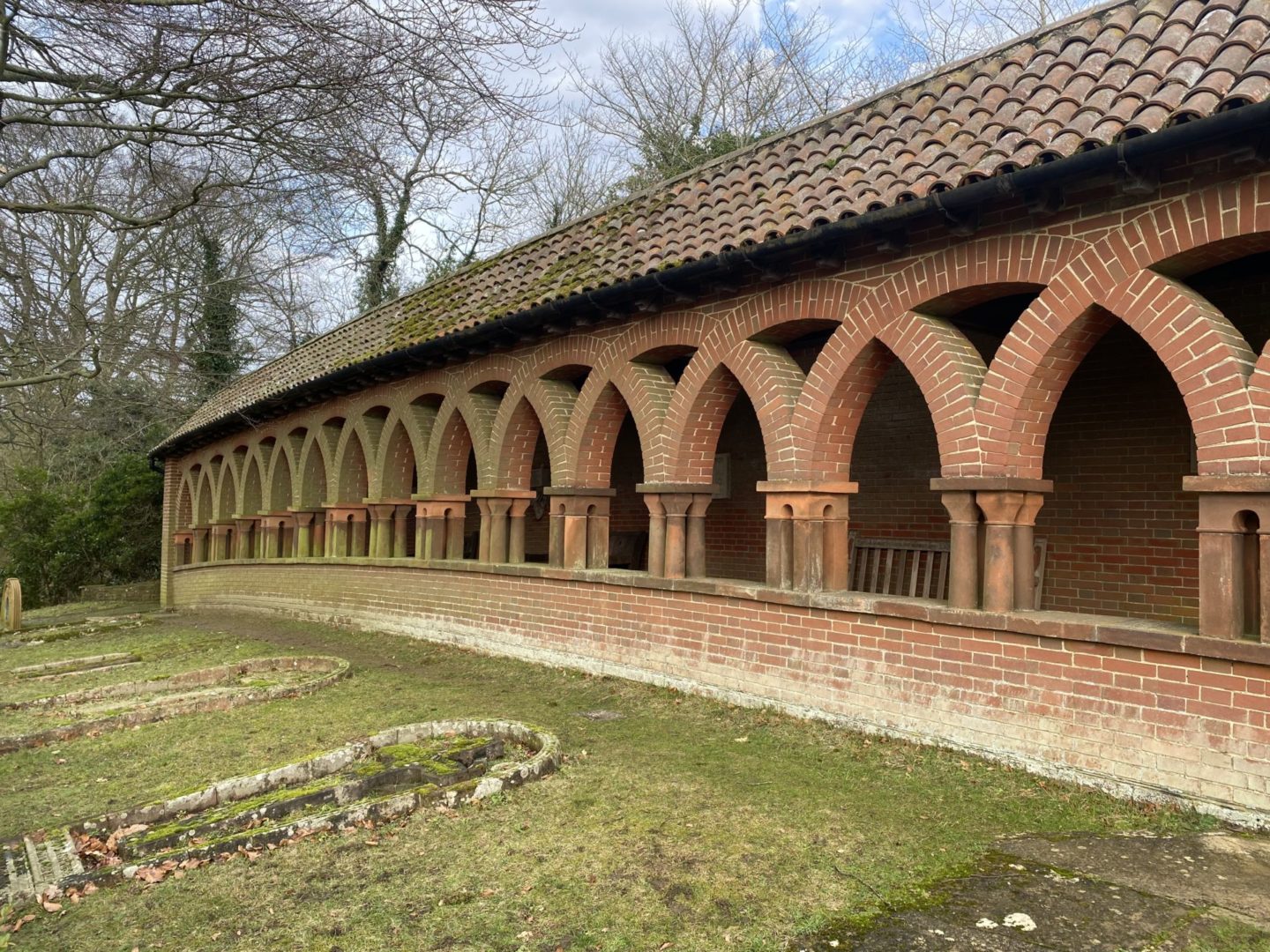
Next ,we headed to the Watts Gallery itself. To modern eyes, his paintings are, how shall I say, a little overblown, but they were wildly popular in Victorian times. The gallery, after restoration, is as it was in Watts’ time.
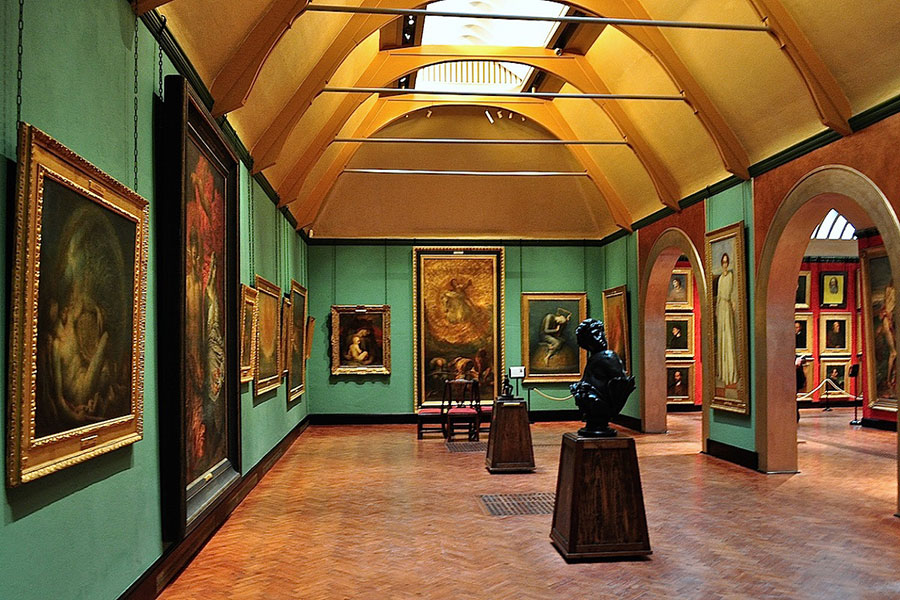
Many of the paintings are huge, with blurred figures retreating into misty allegorical symbolism, and some with no figures at all… like this one. (All these photos are from the internet – no photos allowed in the gallery)

His most famous painting is this one below, ‘Hope’. This painting was the inspiration for the young Barak Obama, who heard a sermon based on the painting before going into politics. Nelson Mandela kept a reproduction on his wall while he was imprisoned on Robben Island.
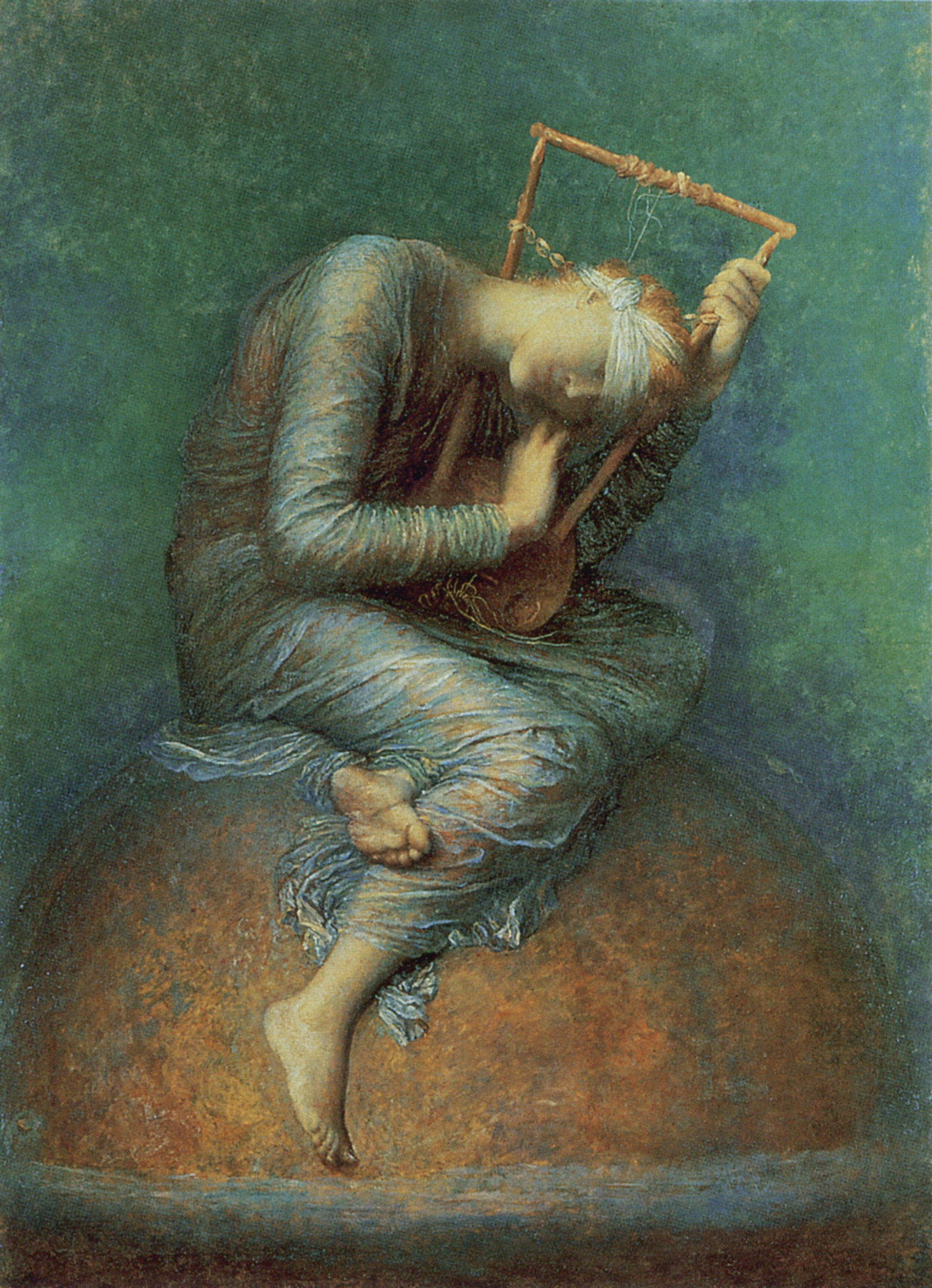
In addition to the Watts painting there was a nice William Orpen exhibition. He painted some lovely things. I particularly liked this one of a WW1 soldier.
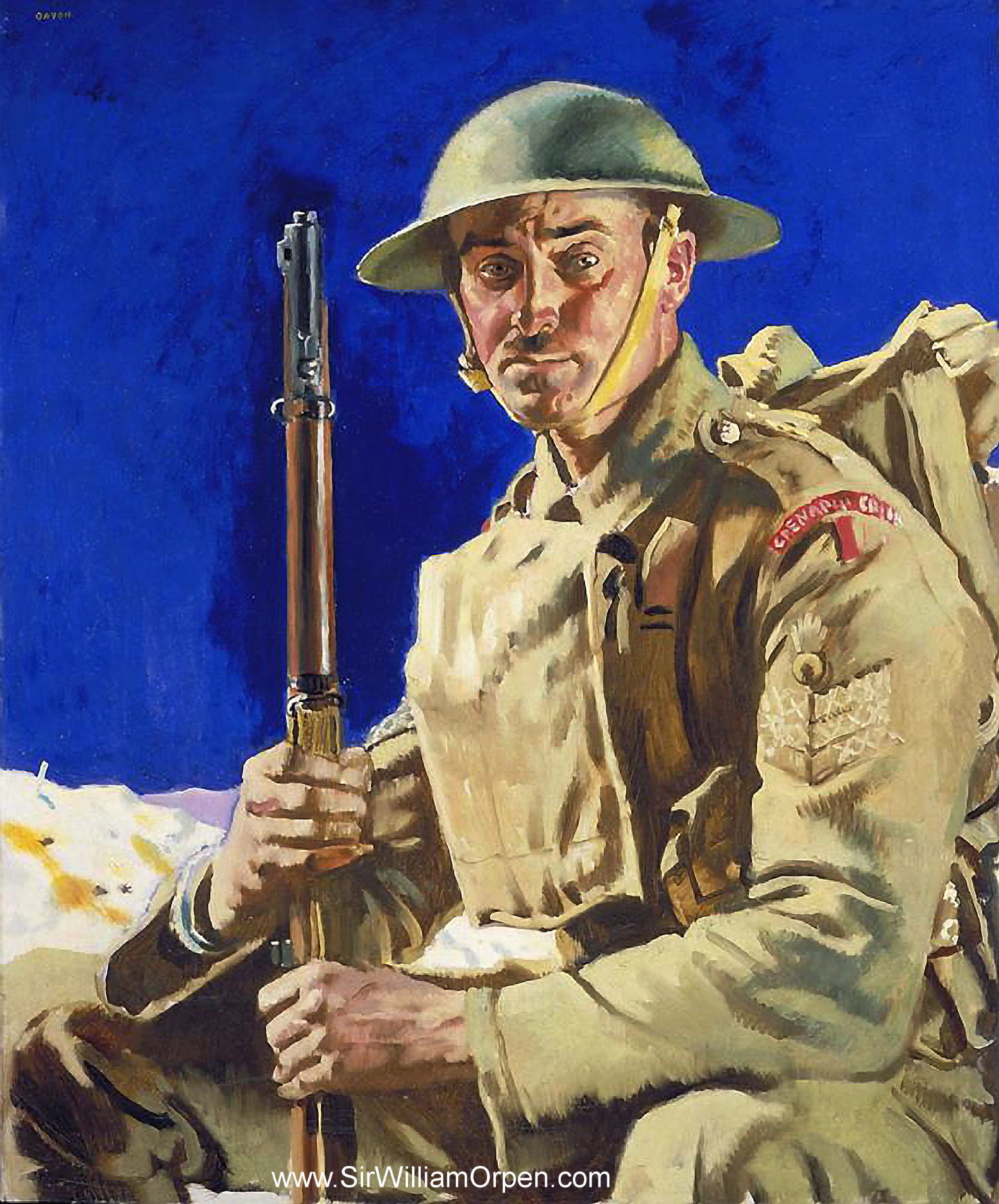
There is also an exhbition of Watt’s sculptures – huge… and a permanent exhibition of de Morgan ceramics:

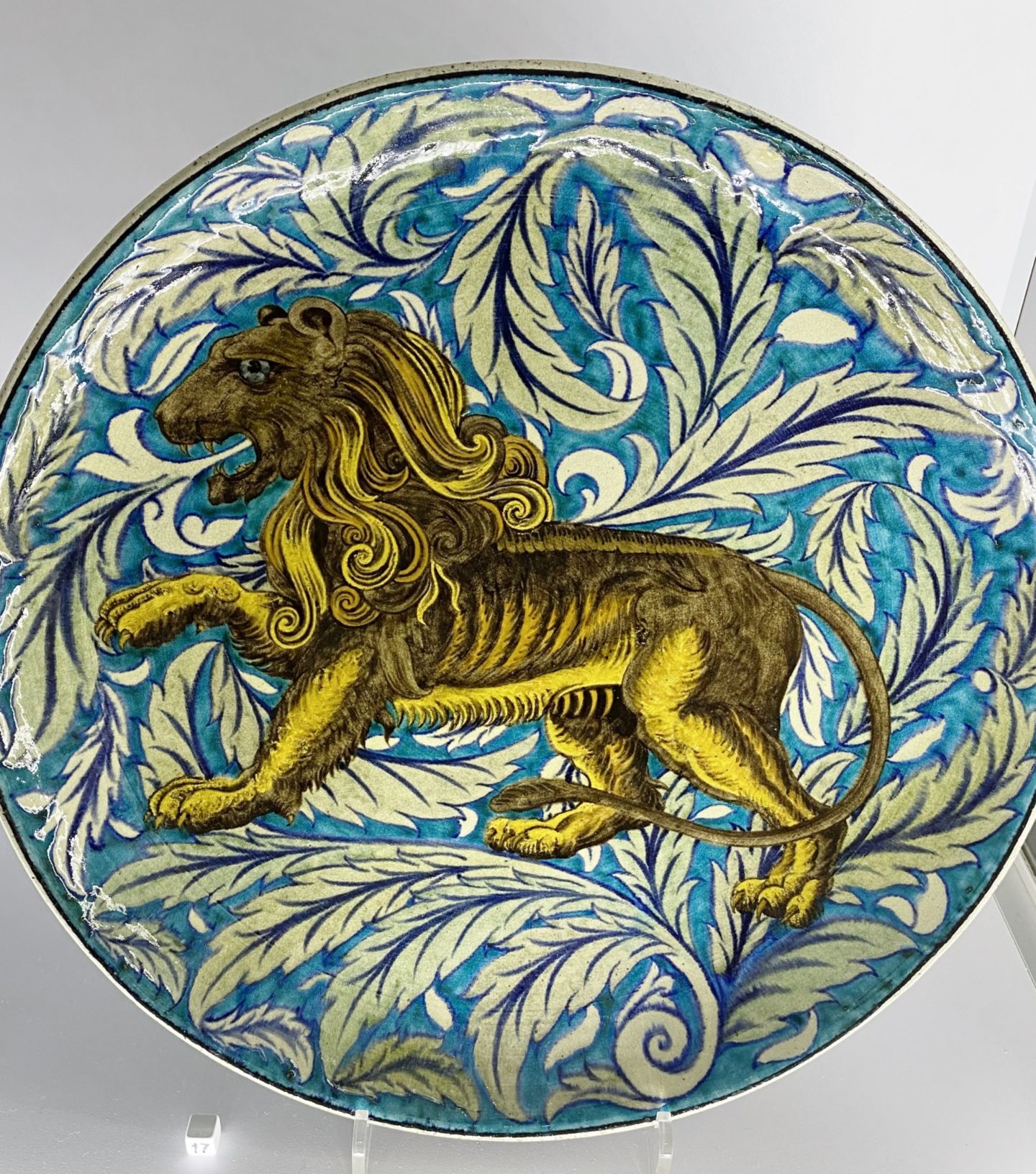
Finally, after lunch, we headed up to the studios in the main house – quite a long way up a steepish woodland path.
In Mary’s studio, I was interested to read about her involvement with the Woman’s suffrage movement, as a suffragist, rather than a suffragette. She was President of her local Women’s Suffrage Society. The Suffragists, the peaceful arm of the movement, were the precursors of today’s Women’s Institute.
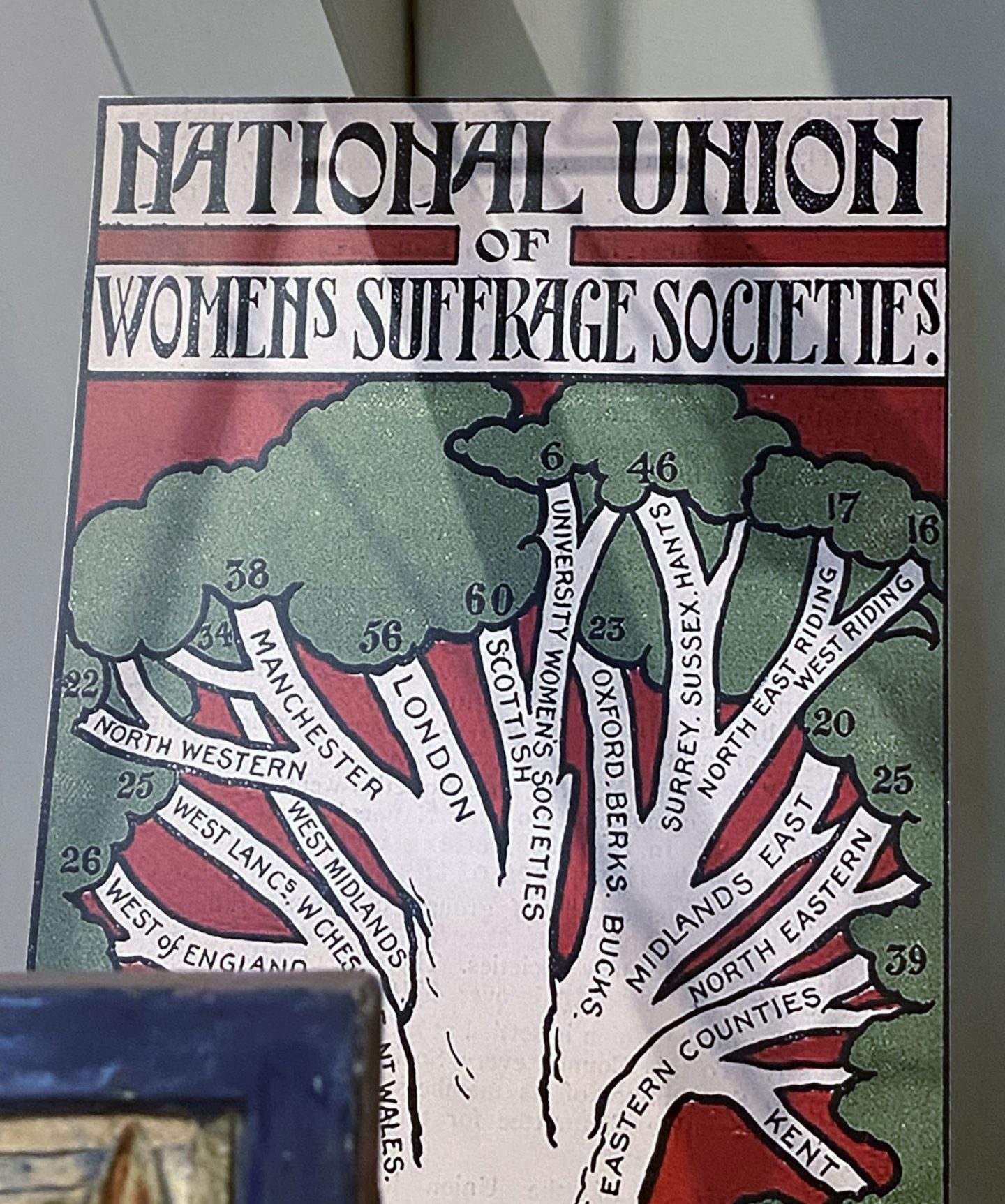
This plaque, made in Mary’s pottery, typifies the suffragist approach, untilising the power of the natural world. They believed women’s equality should be non-threatening and part of a natural human progression towards enlightenment through education. The suffragists bequeathed the values of non-political protest to the WI, the anthem ‘Jerusalem’, and other things like a fondness for banner making. Banner-making was encouraged as a means of peaceful, collaborative political fellowship and public demonstration of suffragist values. Suffragist art emphasised love of the environment and the natural world, using images of flowers, bees and trees – much of this imagery can also be seen in the Watts Chapel.
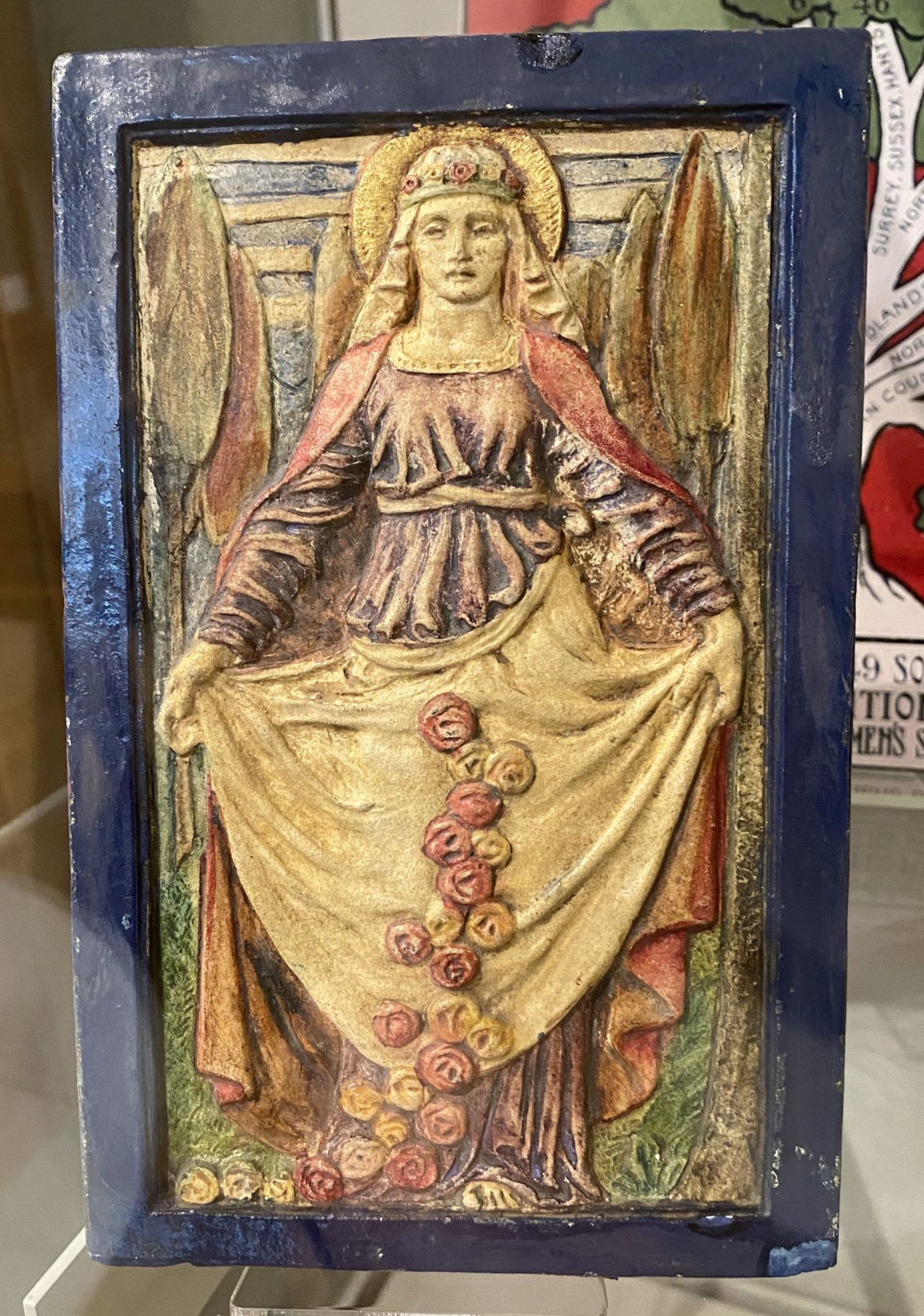
Finally, we saw Watts’ own studio – here it is:
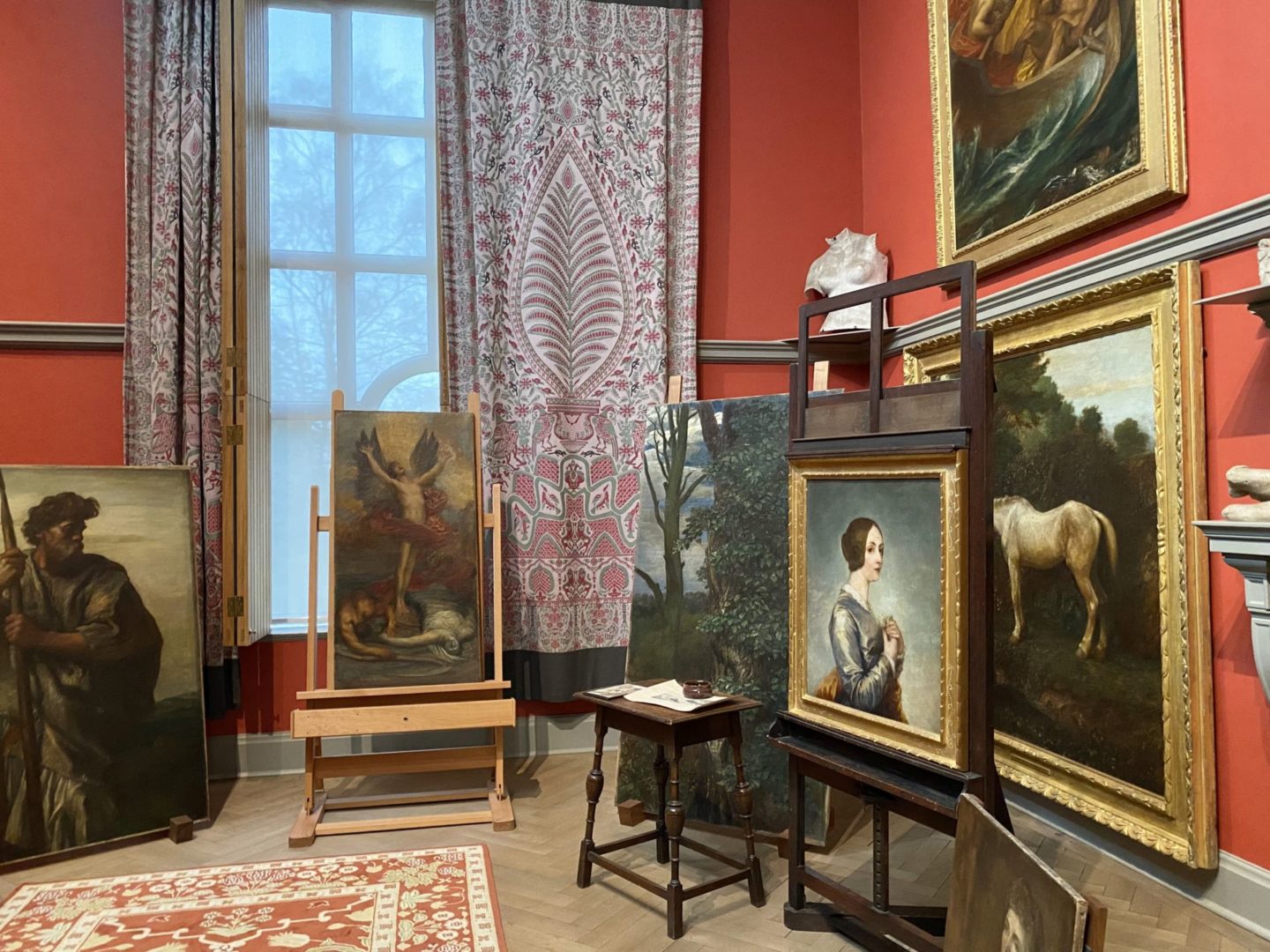
Phew – this is a long post….
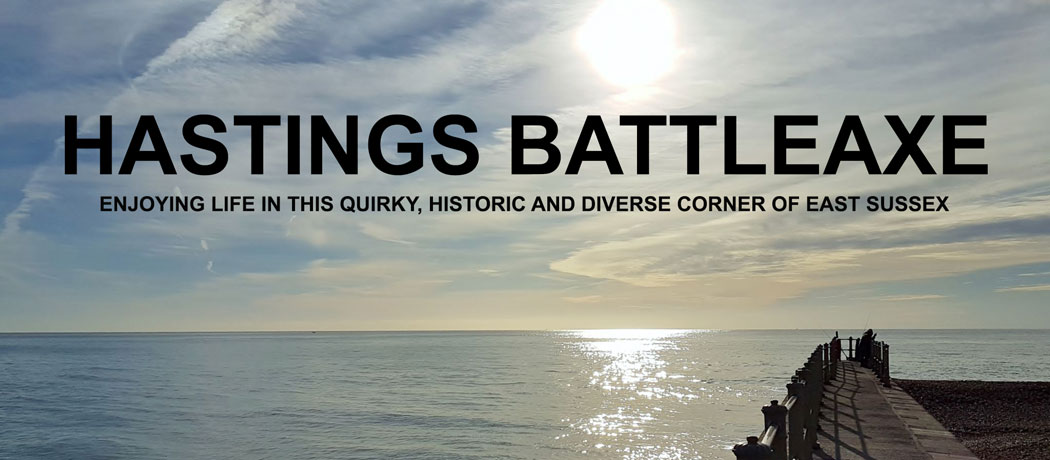
Thank you for. the great.Watts Gallery post
Author
Glad you enjoyed it!